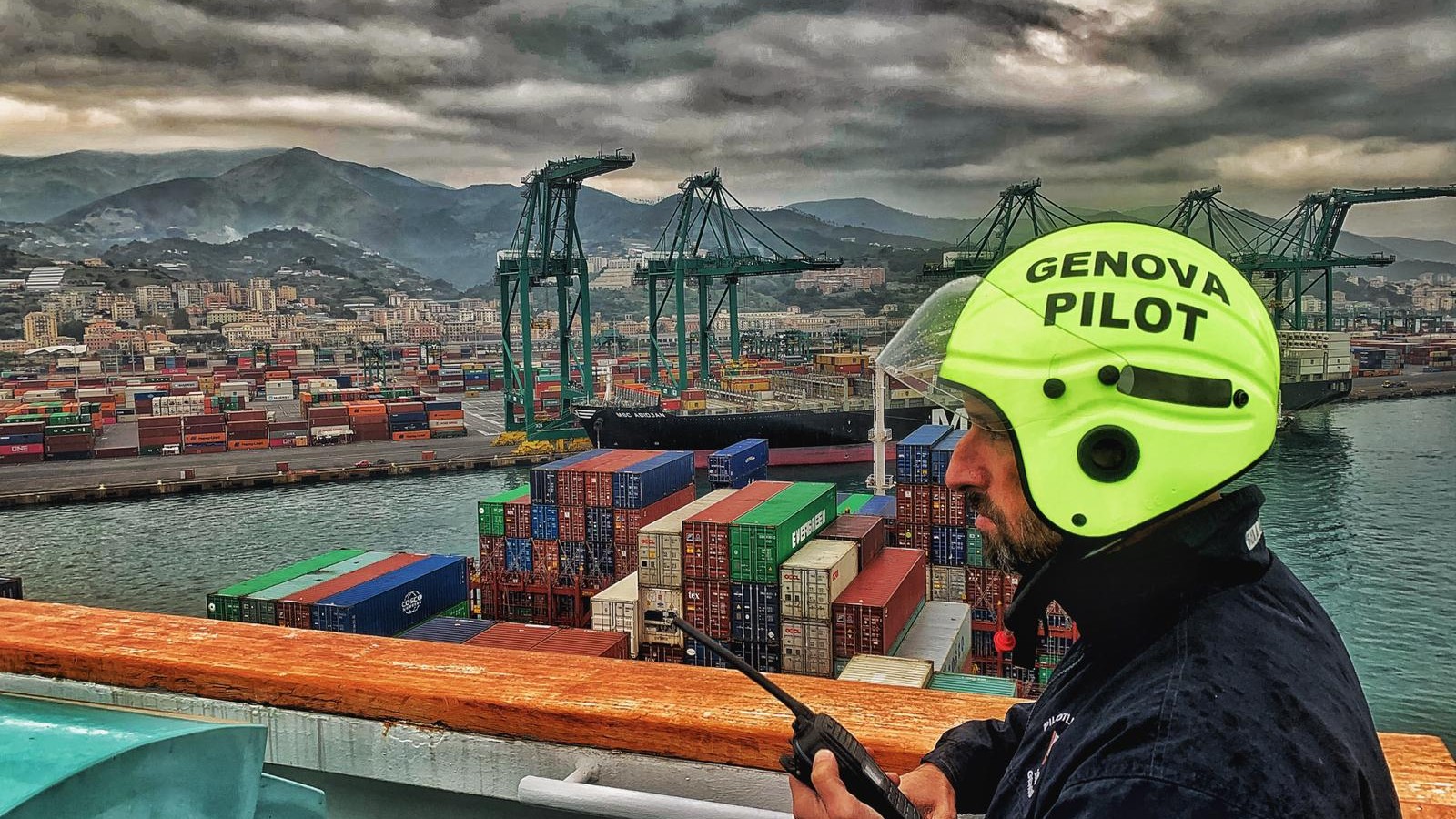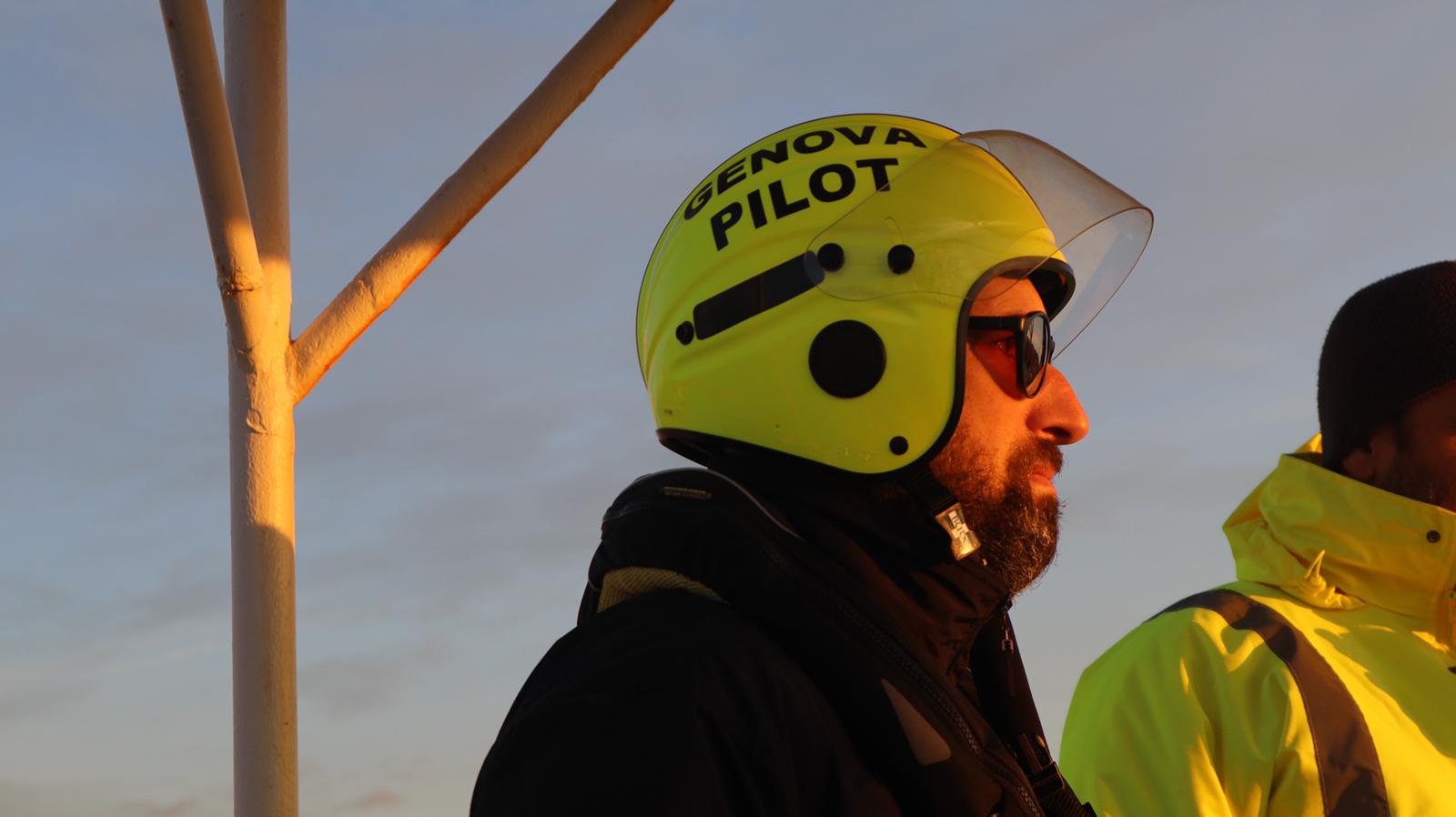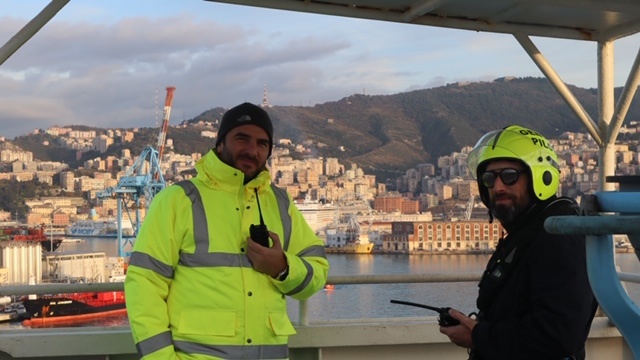
It Was Damn Near! | Massimiliano Gazzale
We just missed …
I had left the combination ladder for a few seconds. The rolling of the pilot boat was making me approach the side of the ship as I had just stepped down to the deck. My right arm had dropped with my leg, and I had turned forward just in time to see the locking pins of the gangway plank fall sideways along with the rest.
That was close! The pilot, who got off before me and observed the scene, said with a comforting smile.
I didn’t realise how much I had risked.
Returning to the Pilots Station, we forgot after a few jokes what had happened: you know, up and down from the pilot ladder, you see a lot of things; the fixed points to be managed automatically are few. The rest is a matter of improvisation according to the situation.
It is possible to imagine the manoeuvre of approaching the ship according to the pilot boat helmsman, just as he knows the times and movements of each pilot, from the most athletic to the most prudent.
First, we study the wave motion trying to understand in advance when the right time will come.
No hurry.
As old pilots used to say: The right time always comes. You need to know how to wait, have a sharp eye and timing.
Everything else remains the result of different combinations between the pilot boat, waves, ship, wind and pilot sensitivity.
After some time, I thought back to that episode, trying to focus on how to prevent these situations (near misses), and I concluded that greater attention and a better perception of timings and spaces would help me, not being able to count on other active references.
Of course, if I had had a helmet.
The manoeuvre was over. The crew was setting up the last mooring line, and the Captain’s handshake confirmed that I would wait for the gangway to go down shoreside. I chose the external route, passing from the wing to the stairs that led to the deck.
The cold northern wind convinced me to adjust the wool cap on my head.
The last stair ramp separated me from the aft manoeuvring post; still in operation, the winches stretched the cables ending with the familiar creaks and pops. The way was clear, and I headed towards the gangway.
You always walk away from the working lines, but that time the danger would not come from that direction!
Like a dull blow to the head, between the temple and the ear, I find myself numb, lying on the metal panelling.
What the hell happened? A mooring line? Impossible!
Rolling over on my side, I observed a nearby “monkey fist” connected to the heaving line that was still moving.
I had been the target of a shooting gallery! I got up and realised that no one had noticed anything: the sailors were busy arranging the ship’s lines in the drip cages, and, on the quay, the mooring men were getting back into the car.
My head began to throb. I took off my gloves, pulled back my cap, and felt the forming bump with my fingers.
What a shock!
I thought I had never got a “monkey punch in the head” before, smiling as I stepped off the ship.
Of course, if I had had a helmet.
Manoeuvres on the open wings leave their mark in winter.
In departure, you can’t wait to return to the warmth of the bridge, while on arrival, you can’t wait to have the mooring lines ashore safely to find shelter inside: no equipment cancels these problems, mainly when intense wind and rain lengthen the manoeuvre times. Each pilot tests the most varied technical equipment until he finds the most suitable compromise between the need for freedom of movement and protection.
Difficult to establish rules that another pilot does not correct according to his taste.
Among all the tricks, the hat and hood of the rainproof coat are the ones that are the most successful; then some try to wear two caps, one with the brim, one with the elastic and so on.
After various experiences and discomforts, the helmet hypothesis made its way into my mind until I discovered that it was more than an idea in other countries: they had been using it for years!
The usual tendency of pilots to be conservative is hard to fight, especially the reluctance to deal with things that already work very well. Even though, in this case, something wasn’t working all that well.
With these thoughts, I concluded to order a pilot’s helmet. I’m not talking about models or manufacturers. My choice fell on a helmet already used in various European organisations. After receiving it, I left it in the locker for several months, wondering if I would ever have the courage to use it to go aboard.
A beautiful rainy day was decisive. I remember finishing the dry caps, so I opened the locker and said: “Go with your helmet!”. Until then, I had not realised that virtually all other Port service operators were already wearing helmets!
Now that some time has passed, I can summarise the experience with the helmet in a large number of positive factors:
- The noise of the engines muffled in the pilot boat;
- A reduced wave splashes on the face during boarding;
- The wind became irrelevant;
- Hearing clean from wind noise when on the ship’s wing;
- Protection against falling objects onboard;
- Protection from passages that are too low or with obstacles;
- Protection from rain and wind during the manoeuvre;
- Mounting a front light adds excellent visibility for dark and unknown paths; when boarding or disembarking;
- Greater visibility in the event of a fall into the water;
- Less head heat loss in case of prolonged stay in the water (thanks to the inflatable interior adaptable to your size).
These considerations concern the winter period. With higher external temperatures, this type of helmet is less comfortable, and there are other models with shape and adjustments, such as to be more ventilated.
I propose to use another type of helmet when the winter season ends, evaluating its usefulness and using it during boarding/disembarking and handling.



